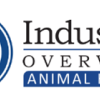Recent Posts
- Cultivating A Champion Culture: Balancing Performance and People in Animal Health
- How Stable are Earnings in Animal Health? Results of the Animal Health Jobs 2025 Salary Survey
- Entry Fees for the Race for Talent: Results of the Animal Health Jobs 2025 Salary Survey
- Looking In The Gift Horse’s Mouth: The Pros and Cons of Counteroffers in Animal Health
- Beyond the Hire: Why Animal Health Needs More "Relationshipping," and Less Recruiting
Most Popular
-

Entry Fees for the Race for Talent: Results of the Animal Health Jobs 2025 Salary Survey
-

News to Know from Brakke Consulting’s 2025 Animal Health Industry Overview
-

How Stable are Earnings in Animal Health? Results of the Animal Health Jobs 2025 Salary Survey
-

Cultivating A Champion Culture: Balancing Performance and People in Animal Health
-

How Will Artificial Intelligence Change Jobs In Animal Health?
News to Know from Brakke Consulting’s 2025 Animal Health Industry Overview

As part of the Brakke Consulting family of businesses, Animal Health Jobs is committed to keeping you informed about the latest animal health industry trends. Our colleagues at Brakke Consulting presented their popular Animal Health Industry Overview at VMX and WVC again this year. Attendees received valuable insights and predictions for the animal health industry. Here are some key takeaways:
Industry trends: Growth and consolidation
The animal health industry’s overall growth has normalized to mid-single digits, after the unusual surges of the COVID years.1 Industry consolidation remains a key feature, with the top 10 companies still holding 63% of the business.1 Leading company Zoetis has become even larger; its sales are now more than 1.5 times that of its next closest competitor, Merck/MSD, and of the companies ranked 6 -10.1 Brakke experts shared their thoughts on this mammoth business, and on other important animal health companies.
Parasiticides: A new inflection point?
Parasiticides are now a $10.3 billion business, with significant changes anticipated in the next two years. The first long-acting injectable flea and tick products launch in 2025, while the first isoxazalines will come off patent in 2026.1 Brakke Senior Consultant Darrell Klug, drawing on over 20 years of experience in the parasiticide business, sees a new inflection point coming. Brands will battle for share of pets as suppliers battle for share of owners. Veterinarians might prefer injectables that must be given in the clinic, but pet owners have become used to the convenience of home delivery and automatic refills. Who will be the top dog?
Companion animal practice: productivity and performance
Companion animal sales are up, while most other species trend flat or are growing more slowly.1 Veterinarians are making more money from fewer clients. Client visits and new clients are down from previous years, but invoices are up.1,2 How long can this go on before veterinarians price themselves out of the market? Seventy-three percent (73%) of veterinarians reported that their clients are more concerned about costs than in previous years.3 Many clients are already turning to online and OTC channels for their needs.
Decreased client numbers is the top concern of companion animal veterinarians, exceeding even staffing concerns like shortages, dependability and well-being.1 Despite these worries, 86% of clinics expect to be just as busy, or busier, in 2025 as they were in 2024.3
Who will care for these patients? Nuances are appearing in the debate over the number of veterinarians and veterinary schools. Read the recent paper co-authored by Brakke Senior Consultant John Volk to see why he thinks the overall supply is sufficient, or contact John directly for a detailed discussion.4
Into the future: Biologicals and regenerative medicine
Biologicals are the only segment of the animal health industry larger than parasiticides, with a market value of $11.8 billion. These and other regenerative products use advanced therapies and techniques to repair or regenerate damaged tissues. Products based on monoclonal antibodies such as Zoetis’s Solensia™ (frunevetmab) and Librela™ (bedinvetmab) fueled industry growth in 2024, but they represent only one aspect of regenerative medicine. Stem cell therapies, gene therapy, tissue engineering, and other disease modifying treatments also have significant potential. 1 Approximately half of veterinarians surveyed already use regenerative medicine for their patients, either in their own practices or via referral to specialists; almost 75% predict that these treatments will become mainstream in the next 10 years.3 Brakke Senior Consultant Mike McGinley discussed some of the challenges innovators will face in bringing these products to market.
Opportunities, challenges and questions
While much of the attention has been on companion animals, the Brakke team sees significant opportunities for innovation in the food animal business. Farmer's needs have expanded beyond generic medications. Who will step up with the next transformative solution for food animals?
Clouds on the animal health horizon include HPAI and concerns over whether or not to vaccinate the nation’s flocks, as well as the impact of international tariffs on import and export of animal products and products for animal health. These uncertainties present complex and ongoing challenges.
Learn more
This overview is a taste of the Brakke team’s insights. There’s much more to learn about the current state and future opportunities in the animal health industry. For a more comprehensive discussion, contact the Brakke team to schedule a private presentation.
---
Animal Health Jobs connects the most knowledgeable job candidates and the top animal health companies. Find experienced animal health insiders who understand the animal health industry and can bring your business to the next level of success. Post your open roles now to find the top candidates in animal health and animal nutrition. Looking for a new position yourself? Post your resume and find your next great position!
Register for our newsletter to stay on top of the latest jobs and trends in animal health and animal nutrition.
References
- Brakke Consulting 2025 Animal Health Industry Overview. Presented 3 March 2025, WVC, Las Vegas, NV.
- Vetsource Veterinary Analytics. Weekly industry summaries https://veterinaryanalytics.com/blog/category/weekly-industry-summaries/
- Brakke Consulting Survey of Veterinarians. Data on file. November 2024.
- MacLachlan M J, Volk J, Doherty C. (2024). Incorporating model selection and uncertainty into forecasts of economic conditions in companion animal clinical veterinarian labor markets. Journal of the American Veterinary Medical Association, 1(aop), 1-8



Comments